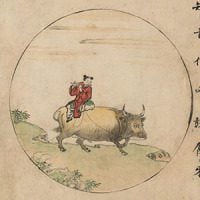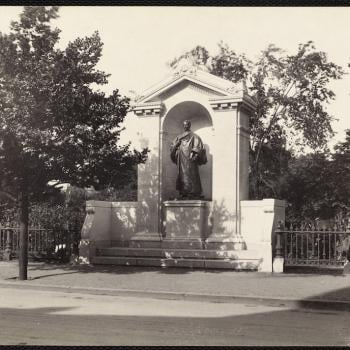I’ve been re-reading Aldous Huxley’s Perennial Philosophy. Once upon a time it was a bit of a Bible for me. Although that was a very long time ago. That noted, I’m a bit surprised at while there is so much I no longer resonate with, how much certain currents continue to flow in my heart.
Clearly, I realize, Huxley was a strong part of my formation as a pilgrim on the intimate way. Not always for the best, but, nonetheless, critical…
It was a treat and a half to discover he had views on the traditional Zen map of awakening, the Ten Oxherding Pictures I guess re-discover is technically correct. Although I’m a fairly different person that the half child half adult me first reading him.
His commentary might be described as Neo-Vedanta. Me, I have no problem with that. In fact I have found a lot of help when discovering fundamental insights can be understood within differing traditions. Each with their own wrinkles. And, no doubt, errors. As my tradition so often warns, or perhaps its invites: one continuous mistake…
In his chapter God in the World, (pages 84-85) Aldous Huxley sings from his heart:
“The pattern of Jesus’ life is essentially similar to that of the ideal sage, whose career is traced in the ‘Oxherding Pictures,’ so popular among Zen Buddhists. The wild ox, symbolising the unregenerate self, is caught, made to change its direction, then tamed and gradually transformed from black to white. Regeneration goes so far that for a time the ox is completely lost, so that nothing remains to be pictured but the full-orbed moon, symbolising Mind, Suchness, the Ground. But this is not the final stage. In the end, the herdsman comes back to the world of men, riding on the back of his ox.
“Because he now loves, loves to the extent of being identified with the divine object of his love, he can do what he likes; for what he likes is what the Nature of Things likes. He is found in company with wine-bibbers and butchers; he and they are all converted into Buddhas. For him, there is complete reconciliation to the evanescent and, through that reconciliation, revelation of the eternal. But for nice ordinary unregenerate people the only reconciliation to the evanescent is that of indulged passions, of distractions submitted to and enjoyed.
“To tell such persons that evanescence and eternity are the same, and not immediately to qualify the statement, is positively fatal–for, in practice, they are not the same except to the saint; and there is no record that anybody ever came to sanctity who did not, at the outset of his or her career, behave as if evanescence and eternity, nature and grace, were profoundly different and in many respects incompatible. As always, the path of spirituality is a knife-edge between abysses. On one side is the danger of mere rejection and escape, on the other the danger of mere appearance and the enjoyment of things which should only be used as instruments or symbols. The versified caption which accompanies the last of the ‘Oxherding Pictures’ runs as follows:
“Even beyond the ultimate limits there extends a passage-way,
By which he comes back to the six realms of existence.
Every worldly affair is now a Buddhist work,
And wherever he goes he finds his home air.
Like a gem he stands out even in the mud,
Like pure gold he shines even in the furnace.
Along the endless road (of birth and death) he walks sufficient unto himself.
In all circumstances he moves tranquil and unattached.”













